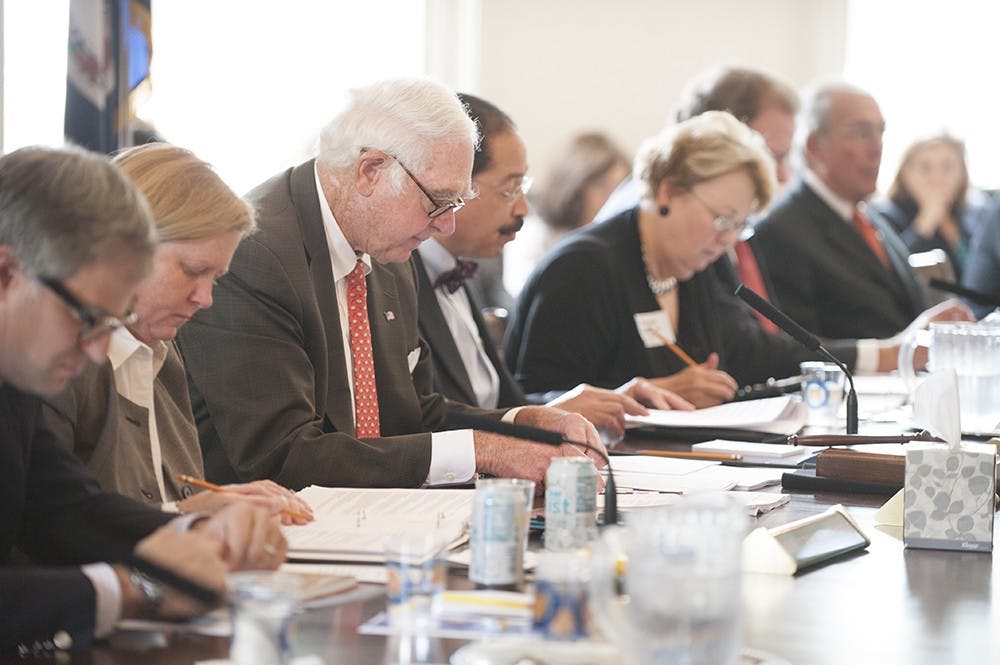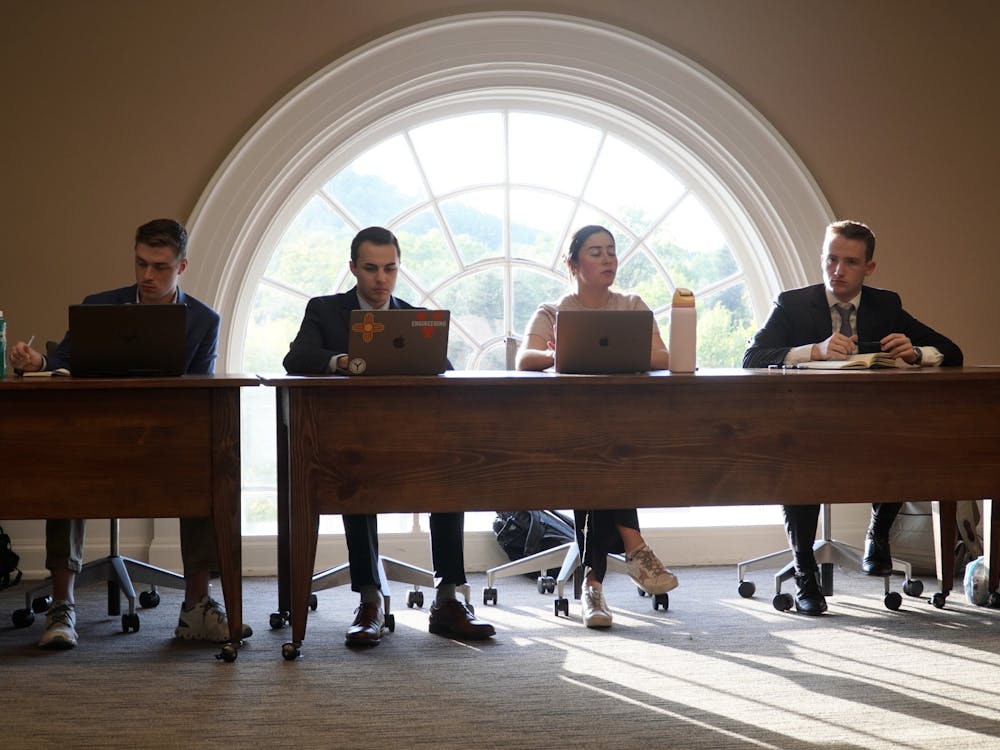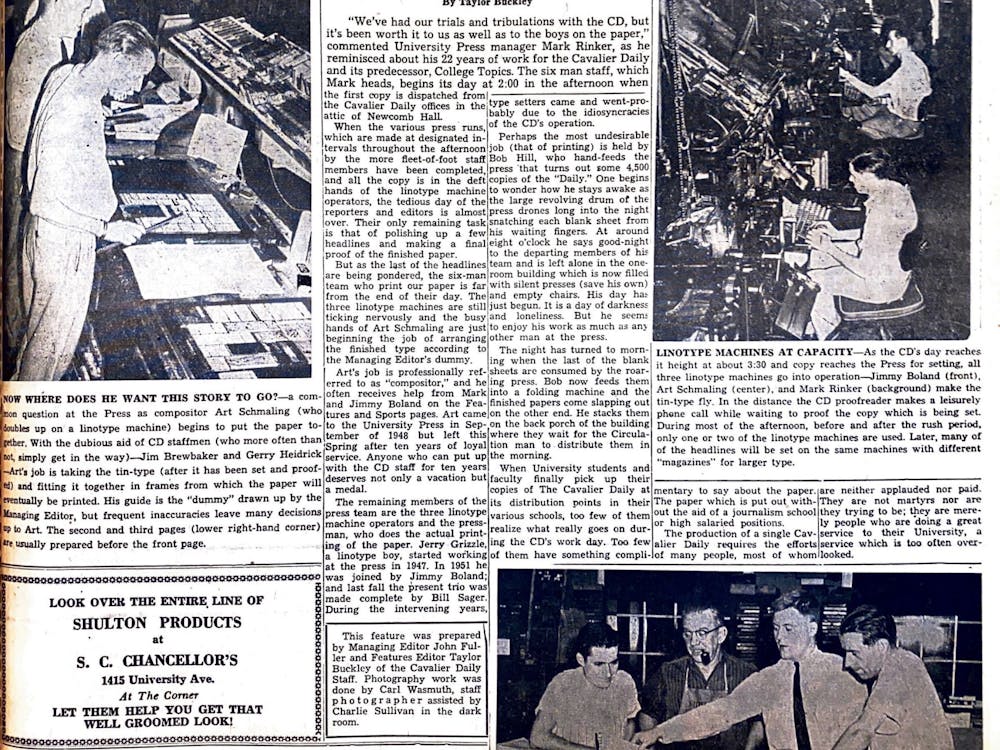At their meeting this week, members of the Board of Visitors will consider the proposed budget for the 2014-15 fiscal year, which runs from July 1 to June 30, 2015. The nearly $2.8 billion budget includes a $100 million, or 3.7 percent, increase from the current fiscal year.
The budget covers the costs of the academic division of the University, including the Schools of Medicine and Nursing, the University Health System, and the University’s College at Wise. The Health System and the academic division each comprise roughly half of the overall budget, $1.3 billion and $1.5 billion respectively, while the College at Wise has expenditures of $41.5 million.
The revenue streams for the two halves of budget, however, are largely separate.
Of the 45.9 percent of the budget specific to the Health System, more than 45 percent comes from patient revenue. These revenues will help supplement the 7.9 percent increase in the Health System’s overall budget this year — a total which accounts for 93 percent of the University-wide budget’s total increase.
The expansion of the system is a main cause for the budget increases, University Health System spokesman Eric Swensen said.
“Later this month, we will open the Battle Building at UVA Children’s Hospital, a 200,000-square-foot facility that will consolidate our outpatient pediatric care as well as provide room for an expanded outpatient surgery center,” Swensen said in an email.
Additionally, an education resource center and an expansion and renovation of the Emergency Department are in planning stages, Swensen said. Besides the physical and hiring costs associated with expansion, personnel related costs are also rising as are “costs for supplies, including medications, medical supplies and medical devices”, Swensen said.
“With increasing competition to recruit and retain excellent healthcare employees, we also are budgeting additional money to provide market-based, performance-driven compensation to our employees,” Swensen said. “We will need to hire employees in a wide range of roles and specialties.”
“My largest concern is that tuition is covering the majority of costs right now and state funds are very low in the range of who’s really making up the budget so the . . . tuition is having to compensate for the low amount of investment that the state is making,” Gould said. “That’s not really a new problem.”
Graphic by Lianne Provenzano
Likewise, University President Teresa Sullivan is working to increase pay for faculty across academic departments — though the total academic division’s budget is only increasing a proposed $5 million, or 0.3 percent.
In raising faculty salaries, the University is keeping in line with its four-year plan, University spokesperson McGregor McCance said.
“The University has a Board of Visitors-approved goal of increasing faculty compensation to the Top 20 of its [Association of American Universities] peers during the next four years,” McCance said in an email. “The budget being considered this week by the [Board of Visitors] includes one step along that process — a 4.75 percent faculty salary pool with increases based on merit.”
The University ranked 26 for average faculty salary among AAU institutions as of Feb. 2013.
Student member of the Board Meg Gould, a rising fourth-year College student, said the major financial priorities of the Board for the next year all involve bettering the student experience, including the increase in faculty salaries.
“I think that having better faculty will definitely improve the student experience as well, and that’s one of the major expenses – the increase in compensation for faculty and staff,” Gould said.
Gould said she sees her relationship to the voting members of the Board as that of a “sounding board”. In looking through the budget, she said her largest concern was low state funding.
“My largest concern is that tuition is covering the majority of costs right now and state funds are very low in the range of who’s really making up the budget so the . . . tuition is having to compensate for the low amount of investment that the state is making,” Gould said. “That’s not really a new problem.”
Tuition and fees is the largest source of revenue, covering 36.4 percent of the academic division budget. State appropriations are the fifth biggest source of revenue — covering 10.3 percent at $9,518 per student. It comes behind sponsored programs, sales and services, and the endowment in terms of total funding for academic expenses.
In comparison, University of Michigan receives $13,887 in state appropriations and the University of North Carolina receives $22,131 per student, according to the budget summary.
McCance said state funding is inconsistent and difficult to gauge in advance.
“It’s impossible to predict state funding levels,” he said. “State appropriations have increased slightly in recent years, though the trend over previous years has been lower.”
This year marks the third successive year in which endowment returns have exceeded state appropriations. State appropriations to the University have not fallen every year — and in some years have risen slightly — but there has been a continuous overall decline when accounting for inflation.
In 1991, the Commonwealth provided 35 percent of the University budget. Meanwhile the value of the endowment, and the value of returns on the endowment, has steadily increased. This year’s revenue from the endowment will account for nearly 11 percent of the academic division budget.
McCance said the University is pleased by the effectiveness of the endowment — which sat at $5.1 billion for the 2012-13 academic year and boasted a 13.4 percent return on investment.
“We are pleased that the endowment, managed by [the University of Virginia Investment Management Company], has performed well and positioned the University to increasingly benefit from its annual distribution, which is restricted to a certain percentage range each year,” McCance said.






